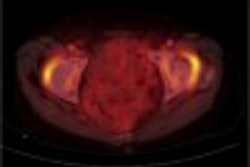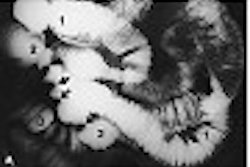CHICAGO - Multislice CT comes with far too many exposure choices, so it’s always good news when researchers take the time to determine the optimal settings in some anatomic region or other. In this case it’s isotropic liver imaging, offered up by Dr. Min Ju Kim and colleagues from the Sungkyunkwan University School of Medicine in Seoul, Korea.
At the 2003 RSNA meeting’s abdominal imaging sessions, Kim discussed the results of her group’s study comparing multiplanar reformatted images of the liver obtained with multiple collimation settings, reconstruction intervals and slice thicknesses.
“Slice collimation, reconstruction intervals and slice thickness play a major role in determining the image quality of multiplanar reconstructed (MPR) images,” she said. “We tried to find the optimal values for three pre- and postprocessing parameters.”
In order to find the optimal imaging values for these parameters in isotropic imaging, i.e., multiplanar reformatted CT images with the same image quality as the axial slices, the group compared coronal MPR with multiple beam collimations (BC), reconstruction intervals (RI) and slice thicknesses (ST).
Forty-five patients underwent CT of the liver on an 8- or 16-slice spiral CT scanner (GE Medical Systems, Waukesha, WI) performed with a fixed beam pitch of 0.875. They were divided into three groups of 15, each undergoing the exam with a different collimation setting of 0.625 mm, 1.25 mm, or 2.5 mm, Kim said.
Then, axial image data for each patient in the three groups were reconstructed at different reconstruction intervals and sent to a workstation (GE Advantage Workstation 4.0). For Group 1 (0.625-mm collimation) it was RI: 0.625 mm; for Group 2 (1.25-mm collimation) it was RI: 0.625 and 1.25 mm; and for Group 3 (2.5-mm collimation) it was RI: 0.625 mm, 1.25 mm and 2.5 mm.)
Then the series for each of the three groups were reformatted into three series of coronal MPR images with different slice thicknesses: 1 mm, 3 mm and 5 mm. After being processed on the workstation, the images were graded for several attributes (on a 1-5 or 1-3 scale) by consensus of two experienced abdominal radiologists.
Image analysis was performed for lesion detectability, sharpness, graininess, artifacts and overall image quality, Kim said. Lesion dectectability was based on the presence of 86 cysts 1 mm or smaller.
“We compared the MPR images to the axial images,” she said. “As the (collimation) value increased to 5 mm, the overall image quality became more blurred, (however), lesion detectability became better as slice collimation increased, especially in the 1- and 3-mm reconstructions…. “Sharpness became worse as the values of all parameters increased…(The) 2.5 mm reconstruction interval was the worst due to stairstep artifacts.”
“We completed a complex statistical analysis (Wilcoxon signed rank test and Mann-Whitney test) to try to find differences between different slice collimations and the same reconstruction intervals and slice thicknesses,” Kim said.
According to the results, slice collimation of 0.625 mm with reconstruction interval and slice thickness of 1 mm were the best values for sharpness, but the worst for graininess. In terms of artifacts, the 1.25-mm reconstruction interval was the best value in each group, whereas the 2.5-mm reconstruction interval was the worst, with statistical significance.
At a reconstruction interval of 0.625 mm, 2.5-mm-collimation images contained significantly fewer artifacts than other collimation settings. In lesion detectability, there were no statistically significant differences, however, 0.625-mm collimation and 5-mm slice thickness showed the worst lesion detectability compared to other collimations and slice thicknesses. The 3-mm slice thickness was the best value except in patient Group 3.
“In conclusion, we can suggest (that) the optimal values for isotropic images of the liver were 1.25 mm slice collimation, the same reconstruction interval, and 3-mm slice thickness,” Kim said. “When using 0.625-mm slice collimation or reconstruction interval we can recommend increasing the slice collimation or reconstruction interval to 1.25 mm, (and) fixing slice thickness at 3 mm to reduce graininess and artifacts.”
Session moderator Dr. Rendon Nelson from Duke University Medical Center in Durham, NC, praised the work, but asked Kim how the group had settled on the fixed beam pitch of 0.875, which he said doubled the overall radiation dose compared with his institution’s typical settings. The beam pitch was selected per the manufacturer’s guidelines, she responded.
By Eric Barnes
AuntMinnie.com
staff writer
December
4, 2003



















